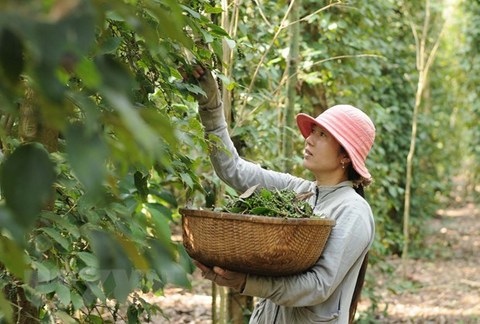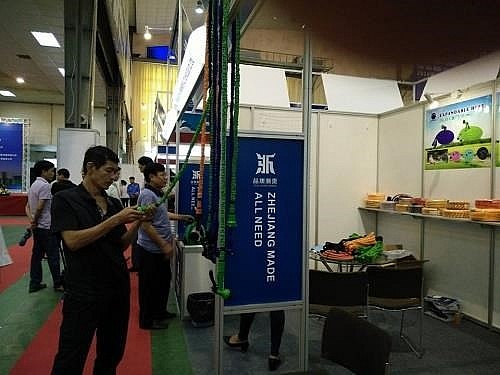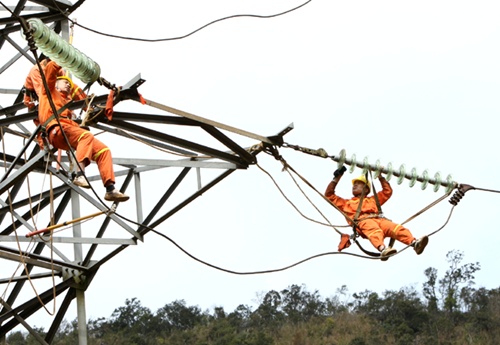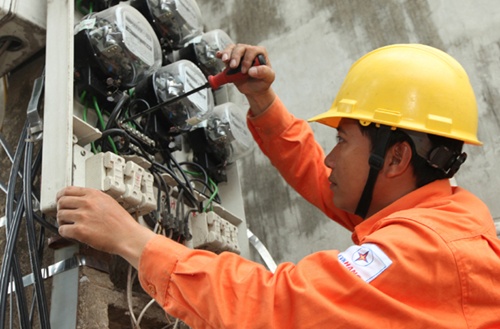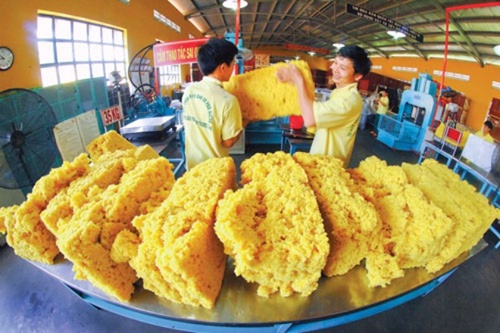Rules of origin make it hard for garment and textile exports
Rules of origin make it hard for garment and textile exports
The Trans-Pacific Partnership and EU-Vietnam Free Trade agreements’ stiff rules of origin will make it hard for Vietnam to expand its garment, textile and footwear exports to these markets.
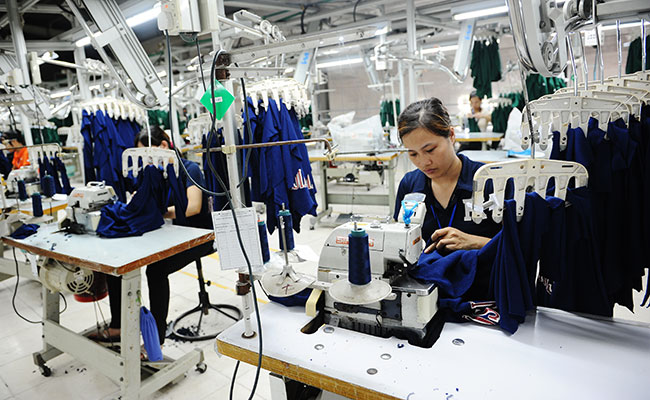
Le Thanh Thuy deputy general director of Singaporean-Vietnamese garment and textile joint venture Norfolk Hatexco, told VIR that her company would not be able to benefit from tariff slashes under the Trans-Pacific Partnership (TPP) and the EU-Vietnam Free Trade Agreement (EVFTA), though it was exporting products to the US, one of the TPP member states, and several European nations.
“It is because the company almost imports materials from Hong Kong, not from TPP and EVFTA member states,” Thuy said.
Quach Thi Nhung, a South Korean garment maker KJ Vina representative, also told VIR that her company imported materials from China and Hong Kong, and products were exported to the US.
This would mean that this company would not be able to enjoy tariff incentives under the TPP, she said.
According to the World Bank’s latest report on the TPP’s impacts on Vietnam, “a large part of Vietnam’s current exports in the garment and textile industry would likely not comply with the TPP’s rule of origin (ROO) requirements.”
Under the TPP’s “yard forward” ROO, to benefit from a 0 per cent imported tariff rate, instead of the current 15-20 per cent, all manufacturing processes including yarn spinning, knitting and dyeing must be implemented in a TPP member country.
According to the report, most imported yarn and fibre used by Vietnam’s garment producers are sourced from non-TPP territories, with Taiwan (32.6 per cent), China (27 per cent), South Korea (14.6 per cent), Thailand (10.5 per cent), and Indonesia (4.1 per cent). Materials imported from TPP member states occupy 5.3 per cent.
Meanwhile, under the EU-Vietnam Free Trade Agreement (EVFTA), the EU will eliminate duties within seven years for Vietnam’s textiles, apparel and footwear products, from the existing duty rate of 12.4 per cent.
However, to benefit from the preferential access, this agreement’s strict ROO for garments require the use of fabrics produced in Vietnam.
This would also mean that Vietnam will find it difficult to meet these EU strict ROO requirements.
Still, several garment firms like Thanh Cong Textile Garment Investment Trading Company and X26 Joint Stock Company said they would benefit from the TPP and the EVFTA as they had close production chains, from fibre, cloth, yarn and buttons to finished products.
“We are expecting to benefit from the TPP and the EUFTA. It is expected that our company’s garment exports to the US, Japan, Australia and Canada [which are TPP member states] will annually advance 25-30 per cent, thanks to tariff slashes,” said Nguyen Viet Thang, head of Technical Division under X26 company producing garments, footwear and wooden products. All materials are sourced from the company’s subsidiaries.
Also according to the World Bank, ROO also creates opportunities for a slew of foreign firms to come to Vietnam to directly make textile, garment and footwear materials.
For instance, Hong Kong’s Texhong Textile and Garment Group is building a $300 million yarn plant for the first phase in Quang Ninh province, where Hong Kong’s Black Peony is also building a $100 million jean cloth producing factory. South Korea’s Kyungbang Company is constructing a $40 million spinning mill in Binh Duong province.


